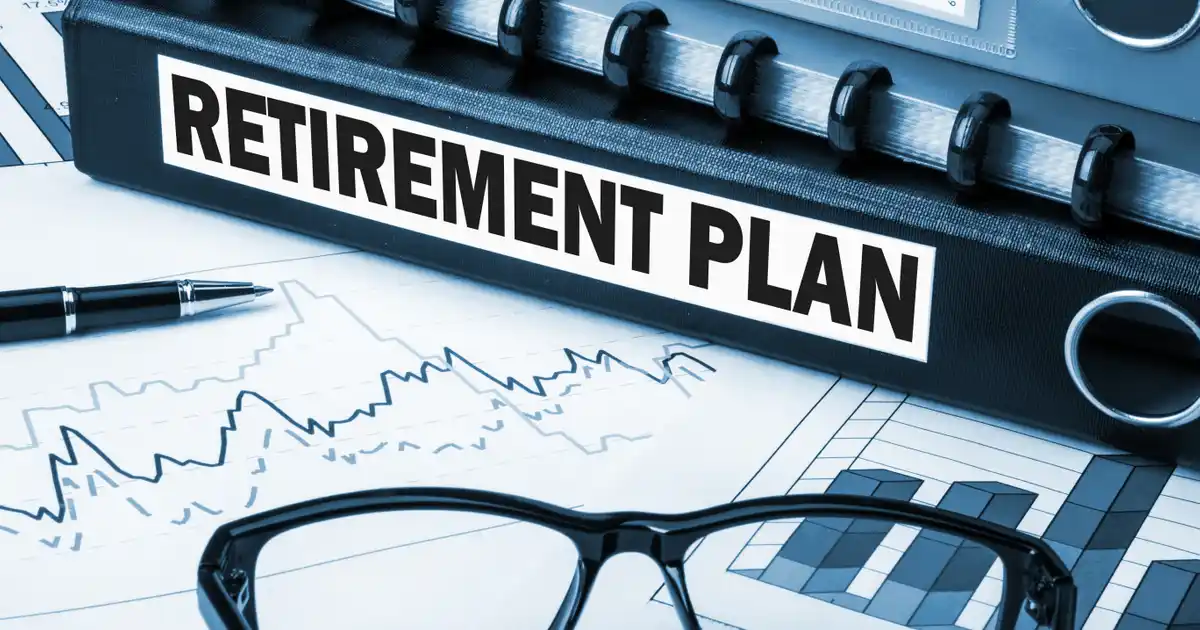Key Takeaways
- Estimate your retirement expenses: Choose an approach that makes sense for you, whether it’s making a detailed list of necessary and discretionary spending, or using an online calculator. If you can lower your retirement expenses, then you won’t have to save as much to reach your target goal.
- Calculate how much you’ll need to save: There are several solid formulas — including the “4% rule” and the “$1,000-a-month rule” — that can help you determine how much total money you will need in retirement accounts and other investments to retire at 55.
- Use a financial planner: A financial planner can help assess your financial situation and create a plan to achieve your early retirement goals. Online financial planners are an affordable alternative that still offer customized investment guidance and planning.
Early retirement is an achievable goal, but it takes planning and persistence.
In this learning path, you will learn what it takes to retire as early as 55. The journey starts with an accurate estimate of how much money you’ll spend in retirement, which will allow you to calculate a target savings goal. Then we’ll walk you through the different types of financial planners — both online and in-person — that can help you work toward that goal through smart investment and saving strategies.
How Much Will Your Retirement Expenses Be?
This is actually the easiest part. If you already keep a budget, then you probably have a good idea of how much you are currently spending each month on necessary expenses, things like food, housing (monthly mortgage or rent), insurance, transportation, health care, etc. Those dollar amounts probably won’t change very much in retirement, says Wes Moss, a certified financial planner, author, and host of the podcast “Retire Sooner.”
“Most people I work with want to maintain their same lifestyle in retirement,” says Moss, “which means that their ‘needs’ stay the same.”
What will likely change in retirement are some of the items in the “wants” category, what’s known as discretionary spending. Moss finds that the happiest retirees have three to four “core pursuits” that keep them active and engaged. These could include sports/fitness activities, volunteering, taking classes you’ve always wanted to try, traveling to other countries, or taking more road trips to see relatives or grandchildren.
 Shutterstock
ShutterstockStart Budgeting
Sit down and make a list of the four most important things that you want to do once you stop commuting to work every day. Now figure out how much each of those activities (Moss calls them “hobbies on steroids”) is going to cost. That dollar amount will make up the bulk of your discretionary spending.
Another way to estimate your retirement expenses is to use an online calculator like this retirement expenses calendar from Fifth Third Bank. The calculator prompts you to enter your current expenses in 11 categories and comes up with projected figures during retirement. Calculators like these allow you to enter a projected retirement age, too, and to adjust for different rates of inflation.
What If Your Budget Doesn’t Balance?
If your estimated retirement expenses are higher than you’d like, here are some tips for lowering them:
- Downsize to a smaller home or apartment.
- Get by with one vehicle.
- Cook at home more.
- Adjust insurance coverage, including life insurance.
Of all of these tips, downsizing to a smaller place might be the most important if money is tight. Debt of any kind — including a mortgage — makes it very difficult to live off your savings during retirement.
“Plan to have your mortgage completely paid off by your retirement date or at least within five years of retirement,” says Moss, who advises clients to follow the “one-third rule.” If the principal that you owe on your mortgage equals one-third or less of your total retirement savings, then you should pay it off in one lump sum. It will save you money in the long run.
If you still have plenty of time before retirement, you can chip away at your mortgage principal faster by making extra contributions to your monthly payment. Use this additional payment calculator from Bankrate to see how quickly you can pay off your mortgage by upping your monthly payment.
 Shutterstock
ShutterstockHow Much Will You Need to Save?
Once you have a solid estimate of your monthly or annual retirement expenses, you can calculate how much you’ll need to save to comfortably cover those costs for the length of your retirement. Retiring 10 years early means that you will have to save enough for a 35- to 40-year retirement, but it’s not impossible.
There are three popular methods for calculating your target retirement nest egg, each allowing you to withdraw a small percentage of your savings each year to cover your retirement expenses:
- The 25 times method
- The 4% rule
- The $1,000-a-month rule
Let’s quickly run down what each of these methods looks like.
The 25 Times Method
The simplest and most straightforward calculation is called the “25 times” method. Since you want your savings to last at least 25 years, then you take your estimated annual retirement expenses and multiply them by 25. So, if you estimate that you’re going to spend $60,000 a year in retirement, you will need a $1.5 million nest egg ($60,000 x 25).
If you plan to retire at 55, though, you’ll need more than 25 years of savings. To live solely on your investments until 90 or older, multiply your annual expenses by 35 ($2.1 million) or more.
 Shutterstock
ShutterstockThe 4% Rule
The “4% rule” is a little more advanced, because it assumes the steady growth of your investment nest egg as you are withdrawing funds during retirement. This method, popularized in the 1990s by financial advisor William Bengen, calculates a savings amount big enough to comfortably withdraw 4% of the total amount every year for roughly 30 years.
Here’s how it works. Take your estimated annual retirement expenses of $60,000 and divide it by 4%, which again gives you a $1.5 million savings goal ($60,000 ÷ 0.04). Bengen’s model assumes a balanced investment portfolio of 50% stocks and 50% Treasury bonds and a 3% rate of inflation [source: Barrons]. If those investments deliver their expected rates of return, then you should be able to comfortably withdraw $60,000 (plus inflation) every year for 30 years without depleting the $1.5 million nest egg.
Again, retiring at 55 means that your nest egg will likely need to last longer than 30 years, so it may be smart to divide your annual expenses by a lower percentage like 3% ($60,000 ÷ 0.03) which would require a $2 million nest egg. For a more in-depth dive, check out our feature article on the 4% rule.
The $1000-a-Month Rule
Moss thinks the 4% rule has its own limitations, so he developed his own method of calculating retirement savings called the “$1,000-a-month rule.”
To use this method, you first need to figure out exactly how much money you will need to withdraw from your retirement savings each month. Maybe your estimated monthly retirement expenses are $5,000, but you expect to receive a $1,000 Social Security check, plus you own a rental property that generates another $2,000 a month. So, you really only need your investments to cover the remaining $3,000 a month.
“The ‘$1,000-a-month rule states that for every $1,000 a month you want to be generating from your investments, you’ll need $240,000 stashed away,” explains Moss.
So, if you need to cover $3,000 a month, you will need to have at least $720,000 in your retirement accounts (3 x $240,000). If you’ll need to cover the full $5,000 a month, that requires $1.2 million.
Note that Moss’s method also assumes a 5% withdrawal rate over 30 years adjusted for inflation. To make that money stretch over a 35 to 40-year retirement, you will either need to save more or lower your expenses to allow a 3% or 4% withdrawal rate.
 Shutterstock
ShutterstockDo I Need a Financial Planner?
Retiring early is a noble goal, but it’s really hard to achieve on your own. You should definitely consider using the services of a financial planner or financial advisor.
“All successful investing has to follow some kind of plan,” says Moss. “It doesn’t work unless it’s directed toward a goal. A financial advisor will work with you to figure out what the actual goal is, how much money you’ll need, and what investment strategies will get you there.”
According to research, using a financial advisor adds an average of 1.5% to 4% to your investments over the life of the portfolio [source: SmartAsset].
If you’re an early-stage investor, you might think that financial advisers are too expensive, but there are different options for different budgets:
Robo-Advisers
Robo-advisers are automated systems that are customizable to your investment goals. If you want to retire at 55, for example, the system will calculate how much you’ll need to invest in your retirement accounts each month to reach your target number. Robo-advisers also automatically adjust your portfolio to keep it balanced and diversified for maximum returns. Most robo-advising services (like Betterment and SoFi) also allow you to speak with a human adviser for big-picture questions.
Cost:
The only fee charged by robo-advisors is a small percentage of assets under management (AUM) around 0.25%. So if you have $50,000 managed by a robo-advisor, you could expect to pay around $125 a year in fees. Most robo-advisors don’t require a minimum AUM, either.
Online Adviser Service
Online financial advisers are a step up from robo-advisers in terms of personalized service. While all interactions continue to happen online or over the phone, there’s an actual human on the other end who is managing your money and helping you stick to a personalized, long-term plan. Companies like Vanguard and Charles Schwab off these services.
Cost:
Unlike robo-advisers, online financial advisers require a minimum AUM of $50,000. That said, they don’t charge significantly more than robo-advisers. Vanguard charges 0.3% of AUM, so a $50,000 portfolio would generate $150 a year in fees.
 Shutterstock
ShutterstockIn-Person Financial Adviser
This is the traditional, full-service financial adviser who meets you in her office and draws up a personalized financial plan that is adjusted as your life situation changes (marriage, home, kids, retirement). An in-person adviser provides the highest level of service and is the best choice for large and complicated financial portfolios that require estate planning. There are also in-person advisers who don’t actually manage your money, but just offer advice and guidance for an hourly fee.
Cost:
Full-service, in-person advisers charge a percentage of assets under management (AUM), usually between 1% and 2% a year. In addition, they will charge a fixed rate for developing a financial plan ($1,000 to $3,000) plus hourly rates of $100 to $400 for special projects like estate planning [source: SmartAsset].
What’s Next?
Before continuing in our Retire by 55 Learning path, you should have a good idea of how much you should be aiming to save per month. This money will be invested in your retirement accounts — 401(K)s and IRAs — and will grow as you get closer to your target retirement age.
If you’re anxious about meeting your savings goal, you’re not alone. Our next section will explore ways of earning more, reducing your cost of living, and tracking your goals. Thankfully, you don’t have to reach your savings goals right away, but every dollar you invest now will earn compound interest that will help you live comfortably in retirement.








